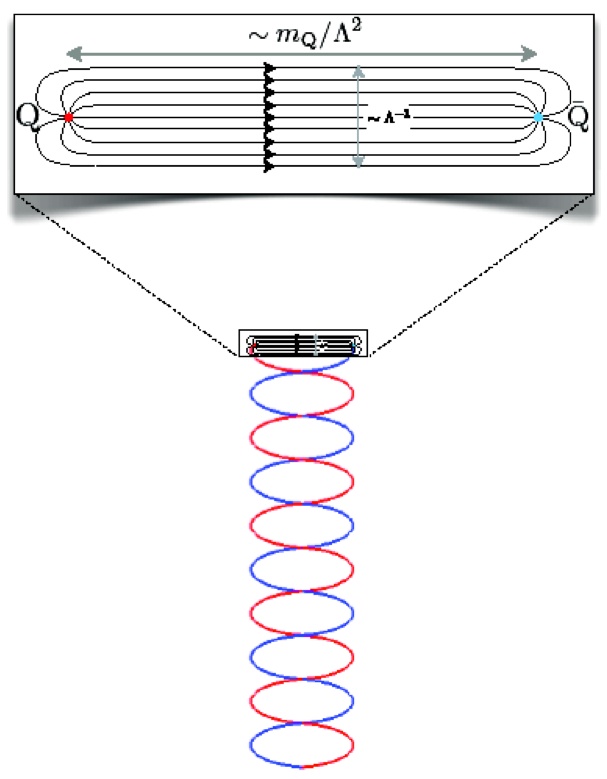...
Embedding the Standard Model symmetry group in higher-dimensional theories often results in additional gauge groups at low energy that have observable consequences at collider experiments. For this reason, simple extensions to the Standard Model group are always promising candidates for new physics searches independent of specific models. One such extension is an additional SU(N) with fundamental fermions similar to the quarks of QCD. If the interaction is QCD-like, generic searches for new massive quarks and stable massive particles are likely to have some sensitivity to this possibility.
| Section | ||||||||||
|---|---|---|---|---|---|---|---|---|---|---|
|
Phenomenlogy
For very small confinement scales, the bound state can be macroscopic, with string lengths of several meters. Quirks in such a bound state leave non-helical trajectories in the detector that will be, at least, very challenging to identify and reconstruct. For very large confinement scales, the quirks undergo rapid re-annihilation, resulting in a prompt "hadronic fireball" that will be difficult to distinguish from QCD backgrounds. However, for intermediate confinement scales, the quirk pair is stable but the string length is typically smaller than detector resolutions: approximately 100 microns. These "mesoscopic" quirk pairs therefore interact like a single particle in the detector, resulting in a simple but distinct signature; a trail of high specific ionization (consistent with a very low-momentum particle) along a nearly straight path (consistent with a high-momentum particle).
...
